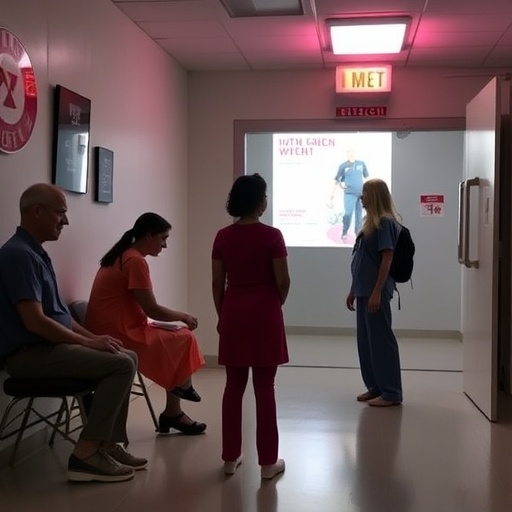CHICAGO – Patients who undergo inpatient surgery experience no difference in death rates, hospital length of stay or costs between admission or discharge whether their physician anesthesiologist is assisted by a nurse anesthetist or an anesthesiologist assistant, according to a new study published in the Online First edition of Anesthesiology, the peer-reviewed medical journal of the American Society of Anesthesiologists (ASA).
Physician anesthesiologists often work with nurse anesthetists and anesthesiologist assistants in the anesthesia care team. All states permit nurse anesthetists to practice, whereas anesthesiologist assistants may practice in 17 jurisdictions.
"Arguments against expanding the number of states where anesthesiologist assistants may practice generally focus on the possibility that health outcomes may be worse when anesthesiologist assistants provide anesthesia care," said lead researcher Eric Sun, M.D., Ph.D., assistant professor of anesthesiology, perioperative and pain medicine at the Stanford University Medical Center in Palo Alto, California. "Nonetheless, until now, it has not been known whether these concerns are warranted and whether there actually is a difference in outcomes depending on whether a physician anesthesiologist works with a nurse anesthetist or an anesthesiologist assistant."
"We found that is not the case. Being supervised by a physician anesthesiologist lessens any differences in background and training between nurse anesthetists and anesthesiologist assistants," Dr. Sun said.
Nurse anesthetists are nurses who receive additional training in anesthesiology through a nurse anesthetist program. Anesthesiologist assistants receive training through an anesthesiologist assistant program. Both providers obtain advanced training in anesthesiology. Nurse anesthetist schools typically require candidates to have a Bachelor of Science in Nursing, professional nursing experience, and a valid nursing license. Entry to anesthesiologist assistant training requires a bachelor's degree with premedical coursework. Then anesthesiologist assistants must complete a comprehensive didactic and clinical program at the graduate school level.
Both anesthesiologist assistants and nurse anesthetists practice with a physician in a physician-led, team-based model of anesthesia care. Anesthesiologist assistants always provide care under the supervision of a physician anesthesiologist. Nurse anesthetists typically practice with a physician in a team model subject to Medicare regulations, state law, or local facility bylaws. There are some practice locations where nurse anesthetists practice in a nurse-only model of anesthesia care.
In this study, researchers used national claims data for 443,000 Medicare beneficiaries who underwent inpatient surgery between 2004 and 2011. The sample consisted of 421,230 surgical cases in which the anesthesia care team consisted of a physician anesthesiologist and a nurse anesthetist, and 21,868 cases in which the anesthesia care team consisted of a physician anesthesiologist and an anesthesiologist assistant.
The study found the adjusted mortality for anesthesia care teams with anesthesiologist assistants was 1.6 percent versus 1.7 percent for care teams with nurse anesthetists. When compared to anesthesia care teams with nurse anesthetists, care teams with anesthesiologist assistants were associated with non-statistically significant decreases in length of hospital stay and medical spending.
"The article shows that anesthesia care provided by an anesthesiologist assistant or nurse anesthetist is equivalent when led by a physician anesthesiologist," Dr. Sun said. "Our results suggest that physician supervision is able to ensure the same outcomes regardless of the team member's differences in training and background."
###
The study, "Anesthesia Care Team Composition and Surgical Outcomes," was supported by funding from the American Society of Anesthesiologists.
THE AMERICAN SOCIETY OF ANESTHESIOLOGISTS
Founded in 1905, the American Society of Anesthesiologists (ASA) is an educational, research and scientific society with more than 52,000 members organized to raise and maintain the standards of the medical practice of anesthesiology. ASA is committed to ensuring physician anesthesiologists evaluate and supervise the medical care of patients before, during and after surgery to provide the highest quality and safest care every patient deserves.
For more information on the field of anesthesiology, visit the American Society of Anesthesiologists online at asahq.org. To learn more about the role physician anesthesiologists play in ensuring patient safety, visit asahq.org/WhenSecondsCount. Like ASA on Facebook; follow ASALifeline on Twitter.
Media Contact
LaSandra Cooper
[email protected]
847-268-9106
@ASALifeline
http://www.asahq.org/




